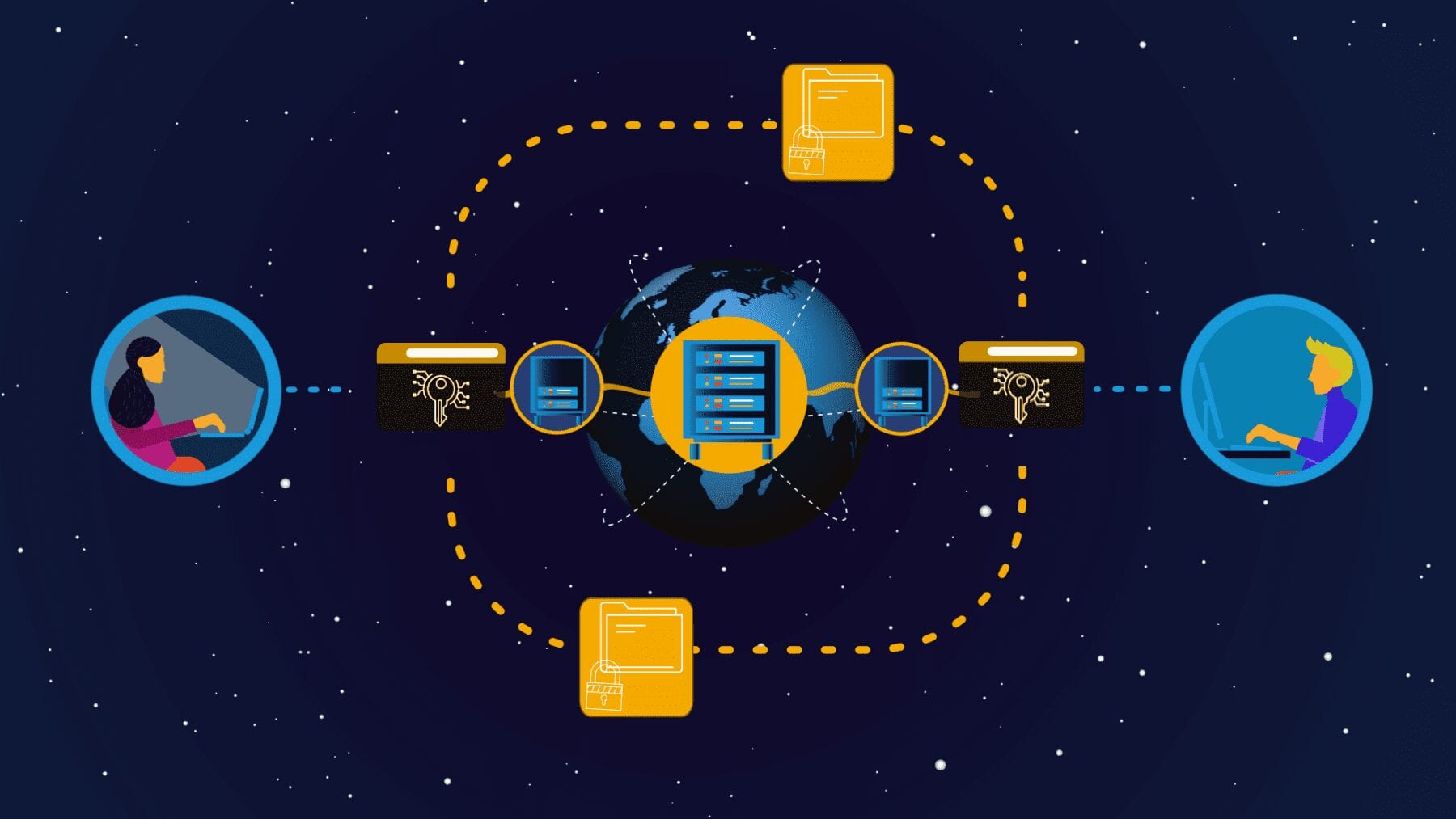
The graph shows Vimeo’s bandwidth usage before and after implementing the algorithm of Mikkel Thorup et al.
An elegant new algorithm developed by Danish researchers can significantly reduce the resource consumption of the world’s computer servers. Computer servers are as taxing on the climate as global air traffic combined, thereby making the green transition in IT an urgent matter. The researchers, from the University of Copenhagen, expect major IT companies to deploy the algorithm immediately.
One of the flipsides of our runaway internet usage is its impact on climate due to the massive amount of electricity consumed by computer servers. Current CO2 emissions from data centres are as high as from global air traffic combined – with emissions expected to double within just a few years.
Only a handful of years have passed since Professor Mikkel Thorup was among a group of researchers behind an algorithm that addressed part of this problem by producing a groundbreaking recipe to streamline computer server workflows. Their work saved energy and resources. Tech giants including Vimeo and Google enthusiastically implemented the algorithm in their systems, with online video platform Vimeo reporting that the algorithm had reduced their bandwidth usage by a factor of eight.
Now, Thorup and two fellow UCPH researchers have perfected the already clever algorithm, making it possible to address a fundamental problem in computer systems – the fact that some servers become overloaded while other servers have capacity left – many times faster than today.
“We have found an algorithm that removes one of the major causes of overloaded servers once and for all. Our initial algorithm was a huge improvement over the way industry had been doing things, but this version is many times better and reduces resource usage to the greatest extent possible. Furthermore, it is free to use for all,” says Professor Thorup of the University of Copenhagen’s Department of Computer Science, who developed the algorithm alongside department colleagues Anders Aamand and Jakob Bæk Tejs Knudsen.
Soaring internet traffic
The algorithm addresses the problem of servers becoming overloaded as they receive more requests from clients than they have the capacity to handle. This happens as users pile in to watch a certain Vimeo video or Netflix film. As a result, systems often need to shift clients around many times to achieve a balanced distribution among servers.
The mathematical calculation required to achieve this balancing act is extraordinarily difficult as up to a billion servers can be involved in the system. And, it is ever-volatile as new clients and servers join and leave. This leads to congestion and server breakdowns, as well as resource consumption that influences the overall climate impact.
“As internet traffic soars explosively, the problem will continue to grow. Therefore, we need a scalable solution that doesn’t depend on the number of servers involved. Our algorithm provides exactly such a solution,” explains Thorup.
According to the American IT firm Cisco, internet traffic is projected to triple between 2017 and 2022. Next year, online videos will make up 82 percent of all internet traffic.
From 100 steps to 10
The new algorithm ensures that clients are distributed as evenly as possible among servers, by moving them around as little as possible, and by retrieving content as locally as possible.
For example, to ensure that client distribution among servers balances so that no server is more than 10% more burdened than others, the old algorithm could deal with an update by moving a client one hundred times. The new algorithm reduces this to 10 moves, even when there are billions of clients and servers in the system. Mathematically stated: if the balance is to be kept within a factor of 1+1/X, the improvement in the number of moves from X2 to X is generally impossible to improve upon.
As many large IT firms have already implemented Professor Thorup’s original algorithm, he believes that industry will adopt the new one immediately – and that it may already be in use.
Original Article: Danish invention to make computer servers worldwide more climate friendly
More from: University of Copenhagen
The Latest Updates from Bing News & Google News
Go deeper with Bing News on:
Resource consumption of computer servers
- Gentoo and NetBSD ban 'AI' code, but Debian doesn't – yet
The problem isn't just that LLM-bot generated code is bad – it's where it came from Comment The Debian project has decided against joining Gentoo Linux and NetBSD in rejecting program code generated ...
- Computing Resources
The Saint Louis University Department of Computer Science operates a variety of Linux computing systems to support both classes and research, including activities in computer science, bioinformatics, ...
- Underwater datacentres vulnerable to sonic attacks
Underwater datacentres (UDCs) could face serious threats from acoustic attacks as simple as a high musical note broadcast beneath the waves, according to new research.
- Does a VPN Slow Down Your Internet Speed?
Yes, VPNs slow down your internet — but not by much. Quality VPNs will typically slow down your internet speed only by around 10-20%, if at all. While there are other factors we’ll get into below, it ...
- State and Local Governments Benefit from Data Center Sustainability
By making data centers more efficient, state and local governments can kill two (or more) birds with one stone. Data center optimization ensures compliance with regulations, saves money and helps ...
Go deeper with Google Headlines on:
Resource consumption of computer servers
[google_news title=”” keyword=”resource consumption of computer servers” num_posts=”5″ blurb_length=”0″ show_thumb=”left”]
Go deeper with Bing News on:
Server overload
- How did two university students get free laundry services?
CSC ServiceWorks provides Internet-connected laundry machines in residences and college campuses all over the world. Typically, you have to pay for each load of laundry you do with their machines, but ...
- Proxy Server Market Trends 2024: Proxyway's Annual Report is Now Available
Proxyway - a major researcher of proxies and web scraping infrastructure - has released a free report on the proxy server market. Proxy Market Research is the largest overview of this kind, and it has ...
- Microsoft fixes Windows Server bug causing crashes, NTLM auth failures
Microsoft has fixed a known issue causing NTLM authentication failures and domain controller reboots after installing last month's Windows Server security updates.
- XDefiant pre-load date announced
Ubisoft has confirmed the preload date for XDefiant, the hotly-anticipated free-to-play arena shooter game that will launch in May.
- Are Marvel Rivals servers down? How to check server status
Test the device on another connection, if possible. Restart your device and attempt to launch the game. Restart your internet modem, wait a few minutes, then relaunch the game. Repair or reinstall ...
Go deeper with Google Headlines on:
Server overload
[google_news title=”” keyword=”server overload” num_posts=”5″ blurb_length=”0″ show_thumb=”left”]











